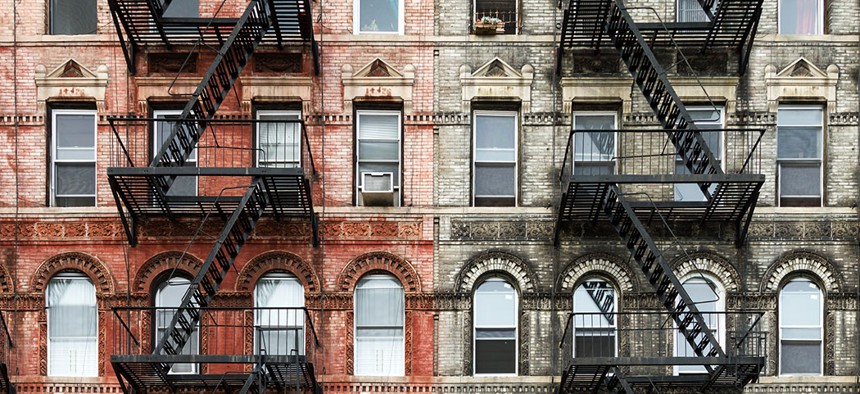Senior issues
What does New York City need to do to house its seniors?
Zoning rule reform in 2016 was a first step to house New York City's seniors, but more can be done.

Brick apartment buildings in the East Village. Ryan DeBerardinis/Shutterstock
New York City’s efforts to reform zoning rules in 2016 – which aimed to make it easier to create affordable housing for seniors – was a valuable first step to house New York’s aging population, said panelists at LiveOn NY’s event held on Tuesday.
Scott Short, CEO of RiseBoro Community Partnership, did have concerns about the bonuses provided for senior housing under those rules, however. They could be constraining, particularly for the mixed-age, mixed-income buildings RiseBoro prefers to build to bypass the pricier construction costs attached with 100% senior housing, he said.
“We’re finding that the ability to build senior housing under (the Affordable Independent Residences for Seniors program) is a lot more limited than what we thought it would be and what was intended.”
More than 1.1 million adults over the age of 65 experience poverty in New York City, according to a 2017 report from the city comptroller’s office. And as the city’s aging population grows – and the affordable housing crisis continues – the urgency of trying to find housing for seniors is set to become all the more pressing.
Most of the largest barriers to creating affordable housing for the elderly comes from the federal government, Short told NYN Media, which includes making the cost of such construction much higher because of prevailing wage requirements. Local elected officials on the panel also noted that many of the tools to provide affordable housing comes down to the federal government, such as the ability to determine the affordable median income in the city, which is then used to designate affordable housing. But they also emphasized more could be done locally, such as addressing opposition to new developments.
“I also think that a lot of ‘Not In My Backyard’ has to do with a lack of communication, proper communication from the administration to the communities,” New York City Councilman Rafael Salamanca Jr. said.
In conjunction with the event, LiveOn NY also published a report outlining the different models certain buildings use to house seniors across the five boroughs. Its recommendations for the city: expand its funding subsidy for the construction of affordable housing for seniors.